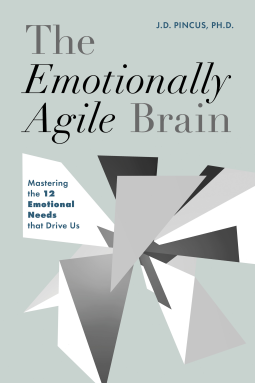
The Emotionally Agile Brain
Mastering the 12 Emotional Needs that Drive Us
by J.D. Pincus
This title was previously available on NetGalley and is now archived.
Send NetGalley books directly to your Kindle or Kindle app
1
To read on a Kindle or Kindle app, please add kindle@netgalley.com as an approved email address to receive files in your Amazon account. Click here for step-by-step instructions.
2
Also find your Kindle email address within your Amazon account, and enter it here.
Pub Date 17 Dec 2024 | Archive Date 17 Dec 2024
Rowman & Littlefield | Rowman & Littlefield Publishers
Talking about this book? Use #TheEmotionallyAgileBrain #NetGalley. More hashtag tips!
Description
A revolution has been quietly taking place in academic psychology, economics, neuroscience, marketing, and business. In study after study, emotional forces massively outweigh human rationality in determining our actual choices and actions. This insight has reshaped both science and industry as its power is harnessed for commercial ends. Those of us who are engaged in the nexus of neuroscience, psychology, and human potential have an obligation to raise awareness of these discoveries, and, more importantly, to use them to actually improve people’s lives.
AgileBrain is based on decades of psychological research conducted by the author, and others, published in peer-reviewed academic journals. It begins with the discovery of the first principles of all human motivation. Motivation is fundamentally about change. These principles can be phrased as two questions:
“Where in your life do you wish to make a change?”
To answer this question, we can choose from four life domains: the Self, the Social, the Material, and the Spiritual. Note that these represent pairs of opposites: Self vs. Social, Material vs. Spiritual.
“What kind of change do you wish to make?”
To answer this question, we can choose from Aristotle’s three levels of existence: foundational (being), experiential (doing), and aspirational (having).
The answers to these two questions form a “Periodic Table of the Elements” for human motivations in the form of a three-by-four matrix. Because there are no other possible life domains or levels of aspiration, the reader can have confidence that every possible human motivation is accounted for.
A key takeaway is that all twelve emotional needs are operating and directing us all the time, and that a key to a happy, actualized life is to pursue fulfillment of needs in a balanced way, which avoids serious problems associated with unbalanced need fulfillment. A recurring theme in The Emotionally Agile Brain is the value of distinguishing between authentic need fulfillment and the superficial, inauthentic substitutes offered by our consumer culture.
After analyzing motivational data from hundreds of thousands of individuals (and consulting to scores of Fortune 500 clients), author J. D. Pincus explains it this way: “Everyone has a unique ‘fingerprint’ of emotional needs at any given moment in time. Becoming aware of that motivational state is a profound revelation for most people. It cuts right through the noise and distractions of life, and frees them to pursue what they really want.”
J.D. Pincus, PhD, is Senior Psychologist at Leading Indicator Systems focusing on emerging methods for measuring emotion and motivation. He developed the unified pyramid model of human motivation and the image-based AgileBrain measurement technique. He recently published the motivational model in the peer-reviewed journal Integrative Psychological and Behavioral Science, and the application of the pyramid model to the concept of employee engagement. His seminal article on the concept of motivation in applied psychology, published in the Journal of Consumer Behaviour, has been cited in 187 subsequent papers. He is a Fellow of the Employee Benefit Research Institute, a Washington DC-based think tank. He was named Researcher of the Year by PMRG and named to the Power List by Senior Market Advisor magazine.
A Note From the Publisher
This is a set of uncorrected page proofs. It is not a finished book and is not expected to look like one. Errors in spelling, page length, format and so forth will all be corrected by the time the book is published several months from now. Photos and diagrams, which may be included in the finished book, may not be included in this format. Uncorrected proofs are primarily useful so that you, the reader, might know months before actual publication what the author and publisher are offering. If you plan to quote the text in your review, you must check it with the publicist or against the final version. Please contact reviews@rowman.com with any questions. Thank you!
Available Editions
| EDITION | Hardcover |
| ISBN | 9781538188781 |
| PRICE | US$42.00 (USD) |
| PAGES | 372 |



